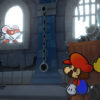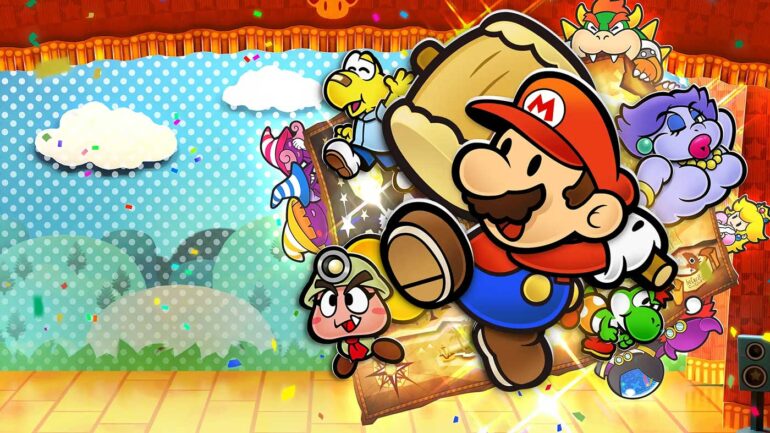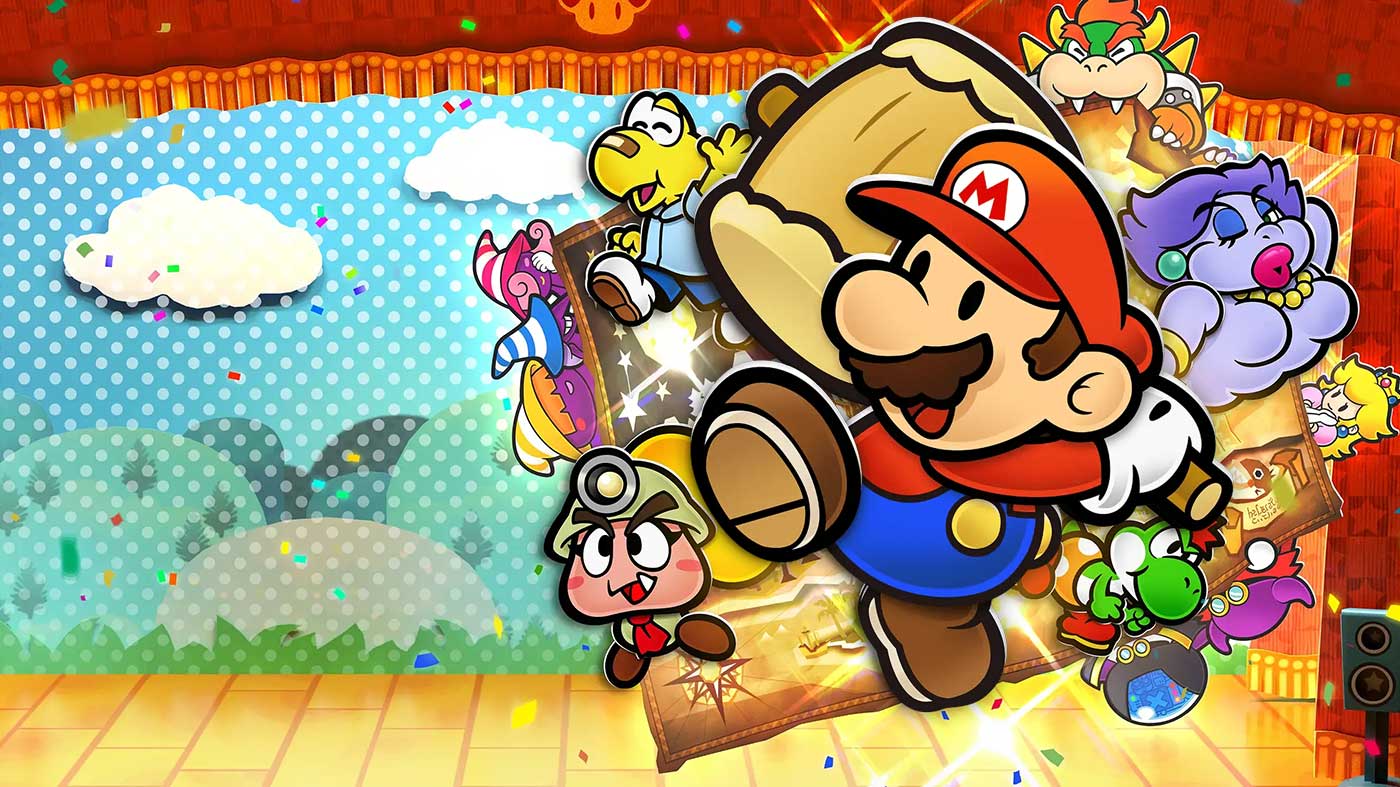There’s a sobering reminder at the end of Paper Mario: The Thousand-Year Door that all good things must end. Upon receiving my final power-up, Toadette excitedly appears and runs me through how to use it, as she has throughout the entire adventure. Then, before she leaves, her expression drops, and she tells me this would be the last time I see her. It wasn’t meant to be a moment that broke the fourth wall, as Paper Mario games often do, but it did. Without a doubt, Nintendo’s remake of The Thousand-Year Door is nothing short of a masterpiece and one of the most incredible adventures you can undertake on your Switch. And that’s coming from someone who has never played it before and has no nostalgic reverence for it.
Paper Mario: The Thousand-Year Door follows Mario as he travels to Rogueport, searching for an ancient treasure. Scoped out there by Peach, who has since been kidnapped, the treasure is rumoured to be hidden behind the titular Thousand-Year Door, which can only be unlocked by collecting seven Star Crystals. At first glance, it’s a typical story, but some nice twists and turns help keep things engaging. Bowser and Peach play supporting roles, too, often poking fun at the roles they typically play in a story like this.
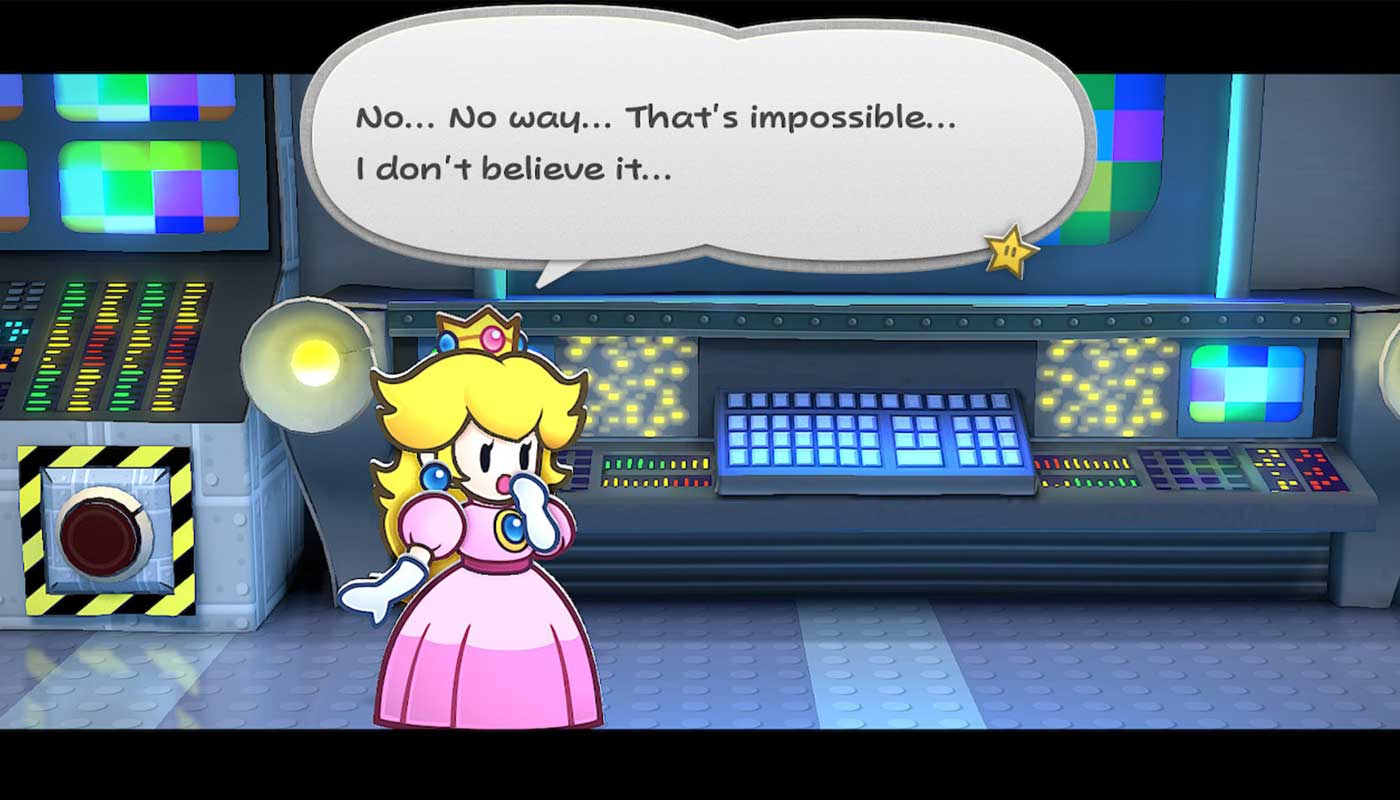
But more importantly, the plot carries a sharp and acerbic sense of wit that I’ve not seen to this degree in other games published by Nintendo. While the overarching story is excellent, individual stories are told within each of the game’s chapters that are more self-contained but still entertaining. The humour is on point, the writing is especially subversive, and it’s an all-around great tale to be told.
If you’ve played the original Paper Mario, you know what to expect with The Thousand-Year Door. As with any typical RPG, gameplay is split between exploration and a turn-based battle system. Exploration is rewarding, for the most part, and makes clever and humorous use of the fact that the characters and the world are made from paper. Mario can eventually fold himself into a paper plane to reach distant platforms or even a paper boat to cross water. Combined with Mario’s jump and Hammer, these skills offer an almost Metroid-esque sense of progression, slowly opening the map up to the player as they progress through the story.
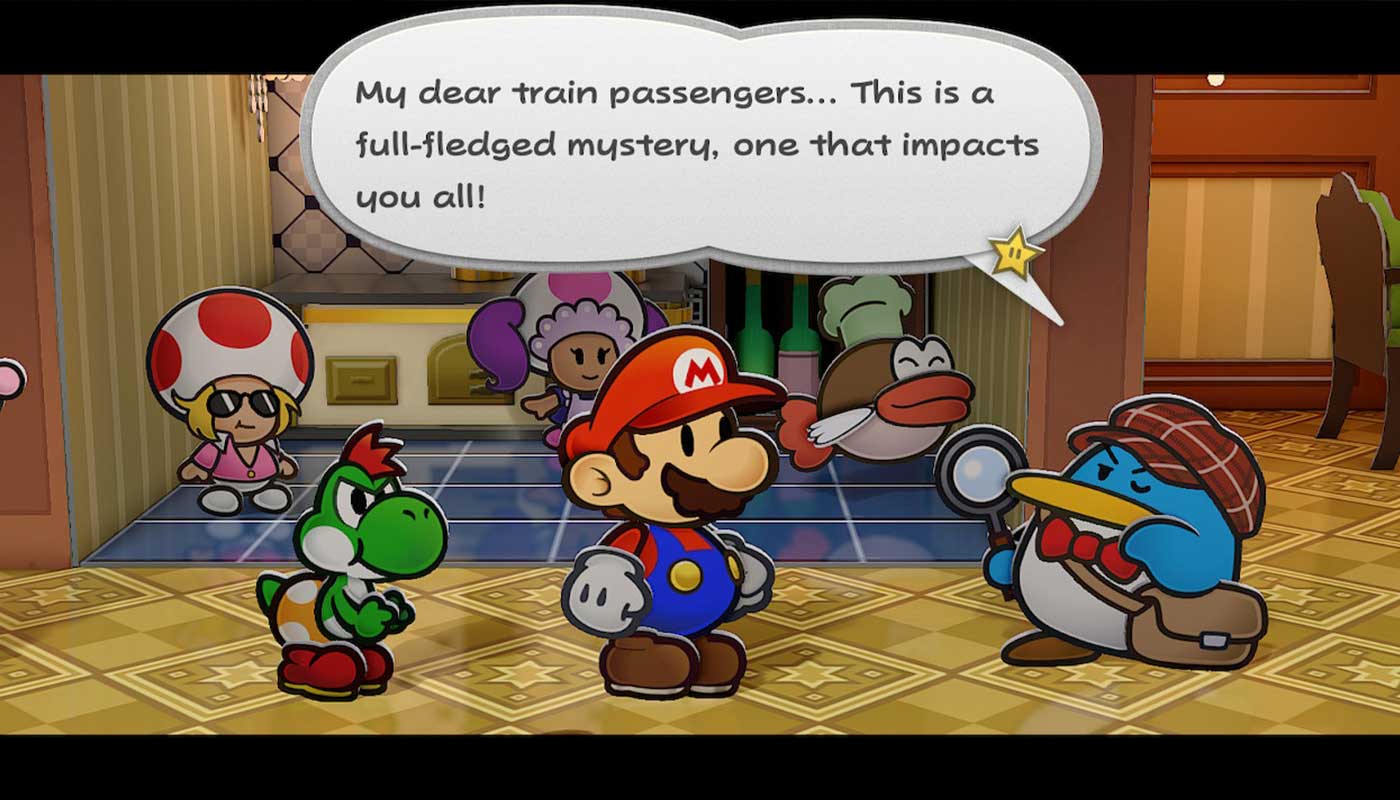
It’s not just about Mario, however. He’s joined by seven other companions throughout his journey, each with abilities that will help Mario solve puzzles. For example, Madame Flurrie can blow a gust of wind to lift paper off the stage that might be covering an exit. The puzzles themselves aren’t incredibly tough, but there is a new hint system in place, accessible with a single button press, which gives a subtle indication of what to do or which character to use to progress. It’s an entirely optional assist system but given how obtuse some of the solutions are, less experienced players will no doubt appreciate it.
Mario and his companions can take their abilities into battle, too, and it’s here where Thousand-Year Door’s simple but engaging battle system makes itself known to the player. You’re always using Mario, but one of the other companions can be switched out on the fly. Mario can Jump, use his Hammer or use the powers of his collected Crystal Stars to do damage. Each of the companions has their own abilities, too. The aforementioned Madame Flurrey can use her wind abilities to blow enemies off the battlefield, for example. Attacks require the player to input an additional string of buttons or time a specific input to maximise damage, keeping things more interesting than just watching you trade blows with enemies.

While it’s a simple battle system, the little intricacies give The Thousand-Year Door a greater sense of strategy. Koop’s shell attacks, for example, can’t hit flying enemies. Mario will take damage if he tries to jump on an enemy made of fire. Some spikey enemies will hurt any characters who try to attack them from the side. There’s a wealth of things to consider when approaching your turn in battle, and it keeps things interesting.
AMAZON HAS THE CHEAPEST COPY AT $69 WITH FREE SHIPPING
The other more unique aspect of battle is that it’s presented like a stage show. The better you perform in battle, the greater your audience grows, which means your star power will recover faster. That brings with it other obvious caveats, though – hecklers may try to throw items at you from the audience and require you to make a swift counterattack. Or it might be a Toad trying to throw you a healing item, which you smash with your Hammer anyway out of quick reflexes. Sometimes, if you don’t finish a battle in time, a Bob-Omb in the audience might explode and wipe out your entire audience. It’s a unique aspect of the battles in Thousand Year-Door that, while a random element, toes the line gracefully between being fair and unfair.
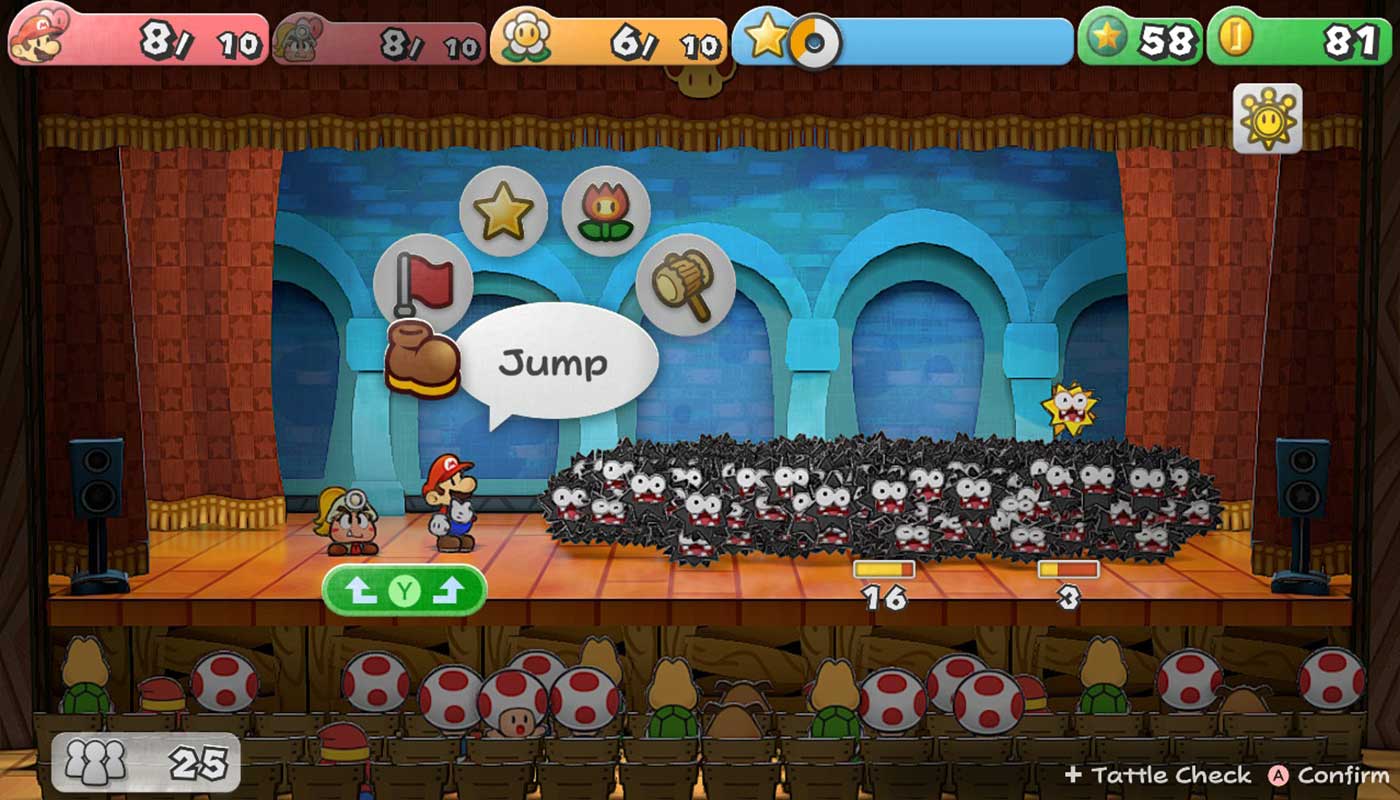
The progression of your characters is handled as you’d expect – levelling up in each battle will allow you to increase your health, magic (called flower points here) or badge points. Companion characters can learn more abilities by finding shines in the game world. But what are badge points? They’re undoubtedly the coolest aspect of Thousand-Year Door, as the more badge points you have, the more badges you can equip, allowing you the flexibility to build your Mario the way you want.
Throughout the game, you’ll find badges that will grant specific attributes to Mario and can be switched on or off through the game’s menus. Some are simple; they might increase your partner’s or Mario’s health points. Others might increase the likelihood of an enemy missing their attacks. Some even increase damage dealt but increase damage received. Some even allow Mario to jump on a spikey or firey enemy without damage. Each badge takes up a certain amount of your badge points, so you’ve got to get a mix that fits within your maximum badge points or increase your badge points entirely by levelling up to build a Mario you want to take into battle. It’s an easy and flexible system that perfectly complements the typical levelling system.
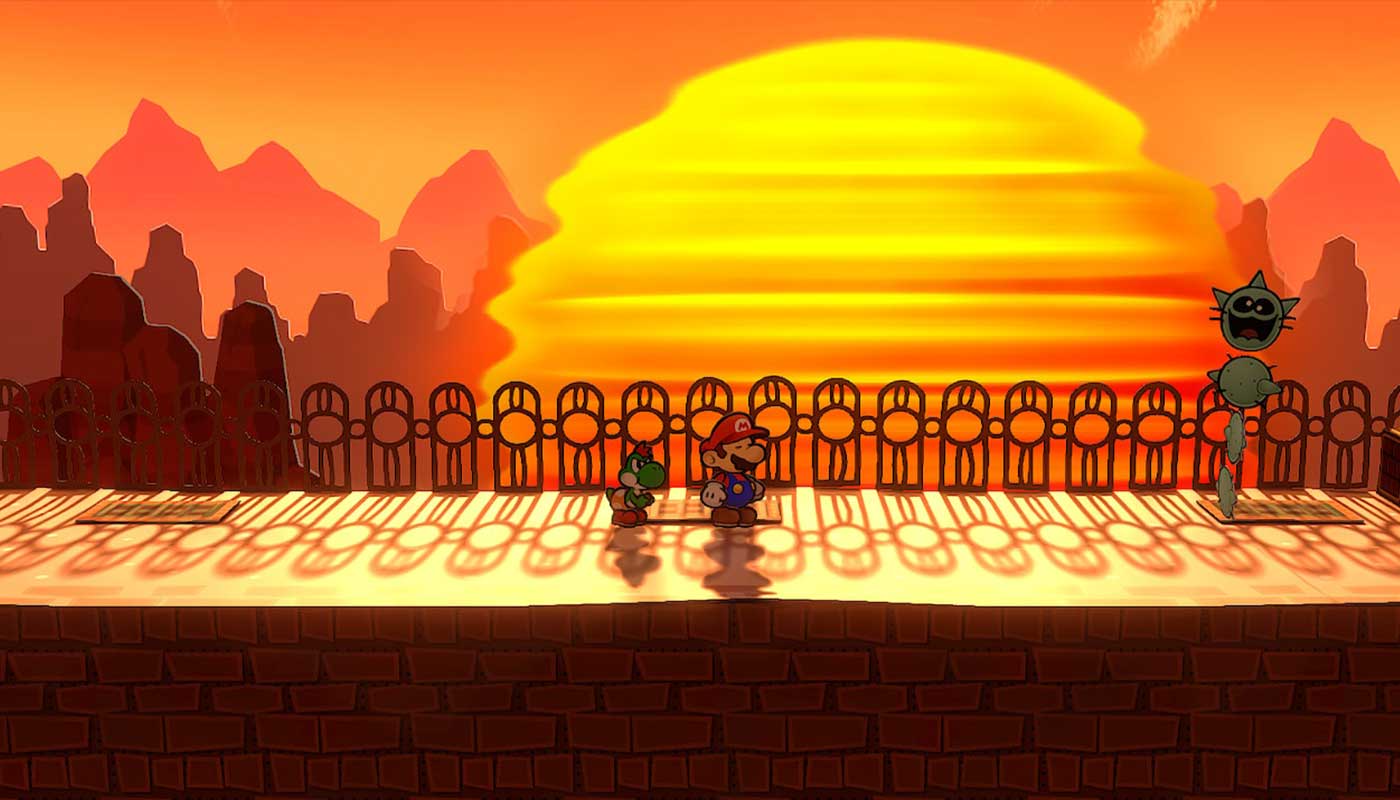
Some small but notable changes to The Thousand-Year Door make it flow better than previously. Companions can now be switched out by holding a shoulder button and selecting them rather than sifting through a menu. It’s a minor change that improves the game flow significantly. Similarly, while there is some pretty gnarly backtracking in the game, it’s alleviated by a new fast-travel system. It’s not quite as modern as you’d expect, but a new room connects all of the visited locales through pipes, which is a godsend in the closing hours of the game.
But while these improvements are significant, it’s disappointing to discover that the Troubles system hasn’t had a similar makeover. “Troubles” serve as the game’s side quests, and while they do a great job at padding The Thousand-Year Door’s already reasonable runtime, they’re never quite more than running from one area, grabbing an item, and bringing it back to someone else. I would be okay with this kind of lax side quest design if the game lets you accept more than one at a time and complete it at your leisure. But it doesn’t. You have to complete one before you can pick up another. The game even charges you a fee (in-game, obviously) to cancel, which seems unnecessarily harsh.
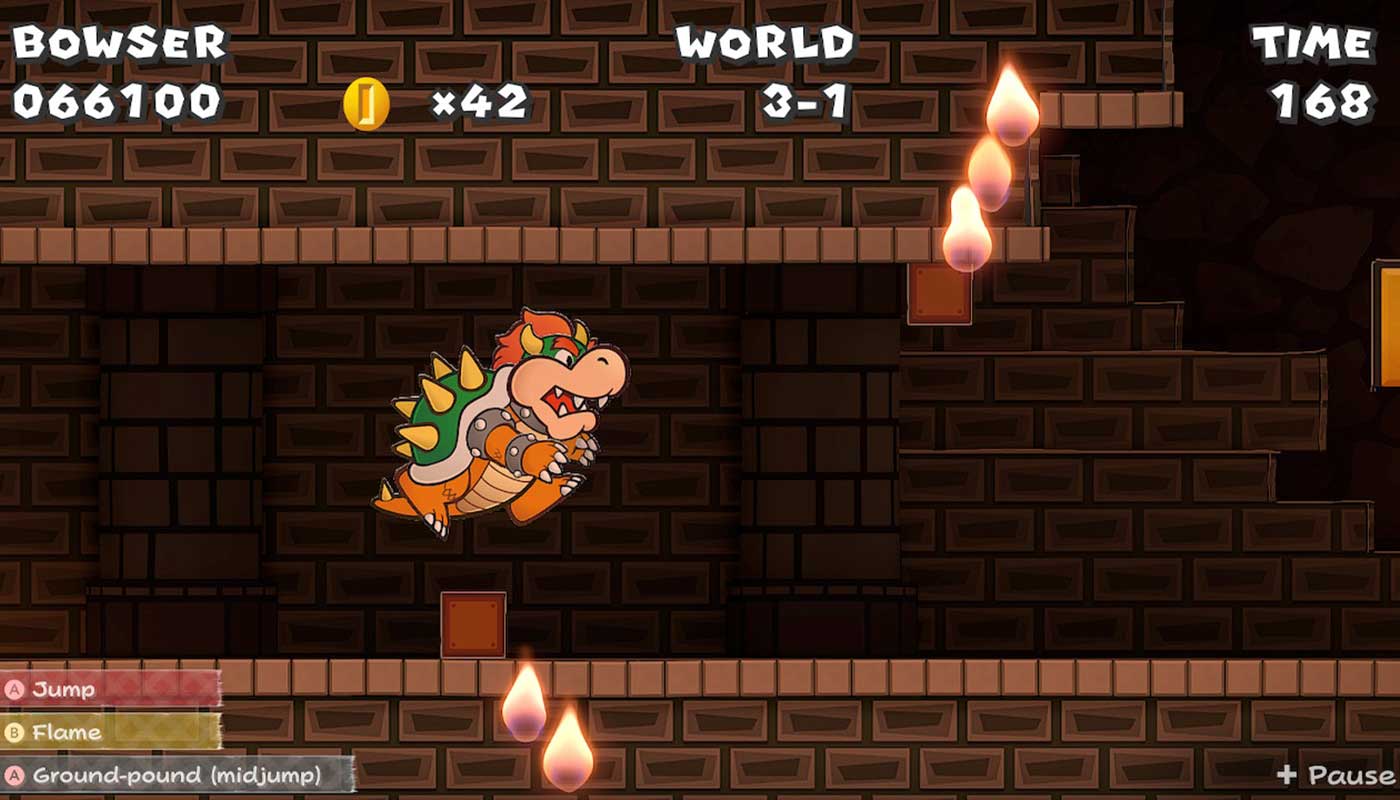
But we can’t talk about a remake without talking about the presentation. The Thousand-Year Door pulls out all the stops to make the game look bigger and better than ever. The framerate is less than the original, but the depth and detail gained more than makeup for it. For example, an area that was a set of green plains in the original game has been given depth and life with denser foliage, dynamic lighting and other little visual touches to make it look so much more alive. They’re significant changes to the game visually, which is bound to be controversial, but they’re such drastic improvements that they make the original game look unfinished by comparison.
A similar approach has been taken to the game’s audio, too. The Thousand-Year Door addresses one of the major criticisms about the original—the repetitive soundtrack. Almost tripling the number of tracks on the soundtrack, there’s a piece of music for every area, every major battle, and every major boss battle. Add to this a Banjo-Kazooie-esque mumble track for every speaking character, and you’ve got a game that you’d almost forget came out in 2004.

And that’s really what a good remake should do. Make you forget and remember, all at the same time. Paper Mario: The Thousand-Year Door delivers on that premise in droves.

